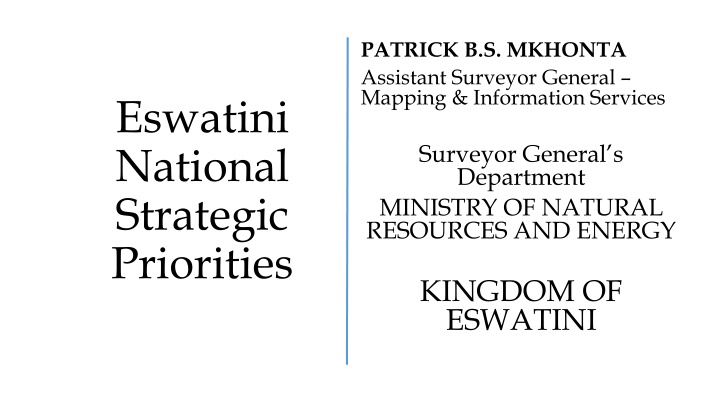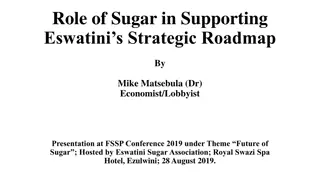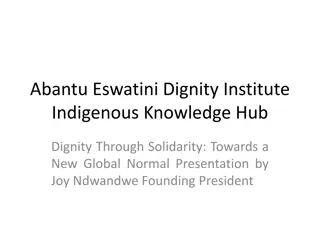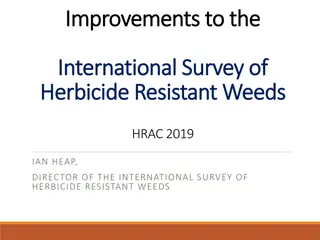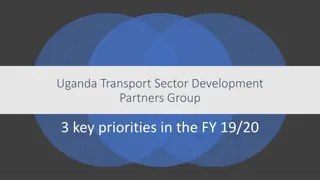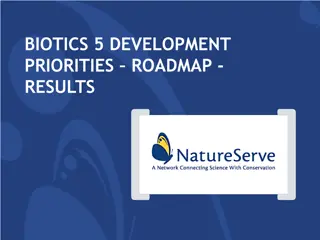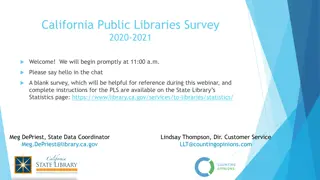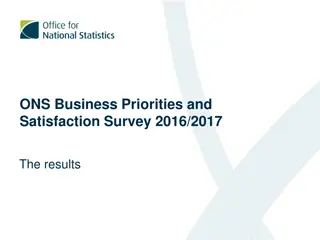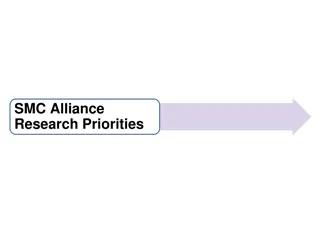National Strategic Priorities Survey in Eswatini
Assisting in mapping and information services with a focus on national policies and strategies in Eswatini to identify and address common priorities such as food security, poverty reduction, and agricultural development through geospatial technologies.
Download Presentation

Please find below an Image/Link to download the presentation.
The content on the website is provided AS IS for your information and personal use only. It may not be sold, licensed, or shared on other websites without obtaining consent from the author.If you encounter any issues during the download, it is possible that the publisher has removed the file from their server.
You are allowed to download the files provided on this website for personal or commercial use, subject to the condition that they are used lawfully. All files are the property of their respective owners.
The content on the website is provided AS IS for your information and personal use only. It may not be sold, licensed, or shared on other websites without obtaining consent from the author.
E N D
Presentation Transcript
PATRICK B.S. MKHONTA Assistant Surveyor General Mapping & Information Services Eswatini National Strategic Priorities Surveyor General s Department MINISTRY OF NATURAL RESOURCES AND ENERGY KINGDOM OF ESWATINI
CONTENTS Country profile National Policies and Strategies Discussion identifying common National Priorities
The Kingdom of Eswatini Eswatini is a land-locked country. Bordered by Mozambique to the north east and South Africa to the north, west, south and south east Covers an area of 63,364 km2 Population of 1. 192 million (2021) GDP per capita 3 978 USD (2021)
Table 1: National Policies and Strategies National Policies and Strategies Evidence of Government Strategic Priority Theme Strategic Drivers Geospatial Benefits of Geospatial Information Current Situation Investment Priority Through agricultural information, farmers can adopt new technologies or farming systems, know when to plant and harvest, which crop to produce and which animal to rear and where to sell. By visualising data using geospatial technologies to spot trends and patterns, change detection, government disseminates information to farmers. Precision agriculture relies heavily on GIS to collect and interpret massive field data for informed decision- making The situation of food security and poverty in Eswatini is dire and deteriorating. Although there are many contributing factors, the agricultural sector lies at the heart of the problem Comprehensive Agriculture Sector Policy (CASP)- 2005 Guides agricultural development to maximise its contribution towards economic growth, food security and poverty reduction 1. Achieve self- sufficiency in food production Accessible information High
Table 1: National Policies and Strategies National Policies and Strategies Evidence of Government Strategic Priority Theme Strategic Drivers Geospatial Benefits of Geospatial Information Geospatial technologies enable the mapping, analysis and visualisation of poverty data. This allows policy and decision-makers to focus available resources to where the greatest needs are. Current Situation Investment Priority Poverty Reduction Strategy and Action Plan (PRSAP)- 2005 The overriding objective of the PRSAP was the reduction of poverty by 50% in 2015 and then ultimately eradicate it by 2022 2. Reduce and ultimately eliminate poverty Over 58% of the population lives below the poverty line, and that 48% of the population cannot meet their food requirements i.e. they are considered to be living under extreme poverty. High
Table 1: National Policies and Strategies National Policies and Strategies Strategic Drivers Evidence of Government Strategic Priority Geospatial Theme Benefits of Geospatial Information Current Situation Investment Priority National Health Sector Strategic Plan (NHSSP) Reverse the downward trend in health outcomes and improve the health status of Eswatini population. Accelerate achievement of the health-related SDGs and poverty reduction strategies. Integrated approach in the delivery of services. Provide a coherent framework for sector wide intervention planning and resource targeting 3. Enhance management of critical resources and improve transparency Improved health services, Tracking infectious diseases and identifying health trends The public healthcare system performance is at its poorest. Most government facilities do not have adequate medical supplies and are under-staffed. High
Table 1: National Policies and Strategies National Policies and Strategies Geospatial Theme Information Strategic Drivers Evidence of Government Strategic Priority Evidence based planning and result based management. Provide a framework for monitoring and evaluating the performance of the sector at all levels. Inclusive and equitable delivery strategies that target the vulnerable and promote gender fairness Benefits of Geospatial Current Situation Investment Priority
Table 1: National Policies and Strategies National Policies and Strategies Geospatial Theme Information Strategic Drivers Evidence of Government Strategic Priority Benefits of Geospatial Current Situation Investment Priority National Water Policy 2018 The Policy acts as a guide for the Government of Eswatini on the development and management of diminishing water resources for sustainable and socio- economic advancement of the livelihoods of the people in the country. 4. Achieve effective manage ment of water resources Information sharing Sharing and the use of geospatial information across relevant agencies to improve water resource planning, operations and monitoring Disintegrated sectoral planning and monitoring. Water allocation and pricing do not adequately recognise water as an economic good High
Table 1: National Policies and Strategies National Policies and Strategies Geospatial Theme Information Strategic Drivers Evidence of Government Strategic Priority Benefits of Geospatial Current Situation Investment Priority Kingdom of Eswatini Energy Masterplan 2034 The document aims to address Eswatini s distinct challenges and is designed to set the energy sector on a firm footing for a sustainable future. One of the objectives is to identify all of the energy sources to meet future energy demand, including untapped potential for domestic energy supply form renewable sources. 5. Achieve self- sufficiency in energy production Accessible Information Enables renewable energy companies to identify suitable locations for wind, solar or hydro-power projects based on factors such as terrain, land-use, population density and environmental sensitivity The country imports all of its petroleum products and around 70% of its power from South Africa and Mozambique, despite being well-endowed with conventional and renewable energy including coal, solar, hydro, wind and biomass residues from sugar and forestry industries. High
DISCUSSION Common National Strategic Priorities?
